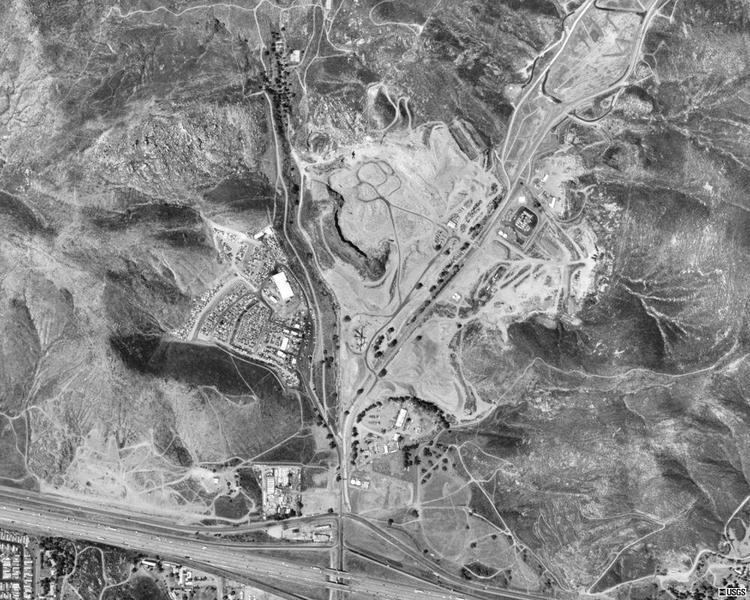CERCLIS ID CAT080012826 | Listed 8 September 1983 Proposed 30 December 1982 | |
 | ||
Address Pyrite St, Jurupa Valley, CA 92509, USA | ||
Jurupa valley stringfellow acid pits
The Stringfellow Acid Pits are a toxic waste dump, and a Superfund site, located in Riverside County, California, United States, just north of the neighborhood of Glen Avon, California. The site became the center of national news coverage in the early 1980s, in part because it was considered one of the most polluted sites in California, and because it became linked with mismanagement and scandal in the U.S. Environmental Protection Agency.
Contents
More history on the stringfellow acid pits
HistoryEdit
Situated at the base of the Jurupa Mountains in Pyrite Canyon, the 17-acre (69,000 m2) site was originally a rock quarry owned by James Stringfellow. The resulting valley seemed a perfect disposal site for toxic waste. In 1956, after a year long negotiations, and at the request of the Santa Ana Regional Water Quality Control Board (RWQCB), Stringfellow opened the site for dumping toxic waste. Included in the negotiations was Stringfellow receiving assurances from a geologist who deemed the site safe for dumping. The geologic survey claimed that the solid bedrock made the valley an ideal and safe site for waste.
In 1972, after it became apparent that the pits were leaking into local groundwater, RWQCB shut down the site. During the facility's 16 years of operation, more than 34 million gallons of liquid industrial waste was deposited in evaporation ponds. Stringfellow claimed his company was without assets, and title to the land passed to the State of California, with oversight given to the Santa Ana River Water Quality Board. Between 1969 and 1980, bad management and bad weather resulted in several spills and intentional releases of toxic chemicals into Pyrite Creek, which flowed into storm channels running through Glen Avon.
In the early 1980s, after the passage of the Comprehensive Environmental Response, Compensation and Liability Act, or Superfund, the site came to the attention of the US Environmental Protection Agency. It was listed as the most contaminated site in California, and was one of the first sites selected for remediation under the Act. The severity of the problems and a subsequent scandal related to the site made the acid pits the subject of national television coverage.
Rita Lavelle, appointed director of the Superfund in 1982 by President Ronald Reagan, was convicted on federal charges of perjury related to an investigation into misuse of the United States Environmental Protection Agency's (EPA) Superfund money during her tenure with the Agency, and irregularities at the Stringfellow Acid Pits. The Lavelle incident was labeled sewergate.
Currently the Stringfellow Site is managed by the California Department of Toxic Substances Control (DTSC).
